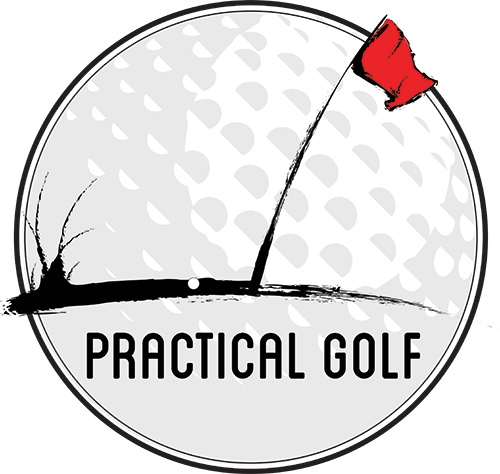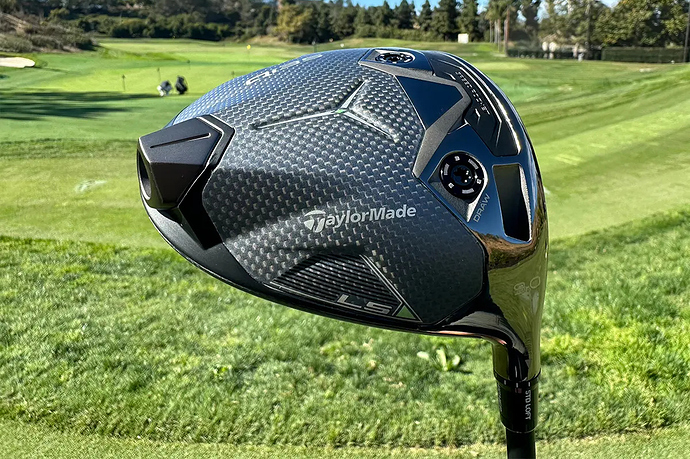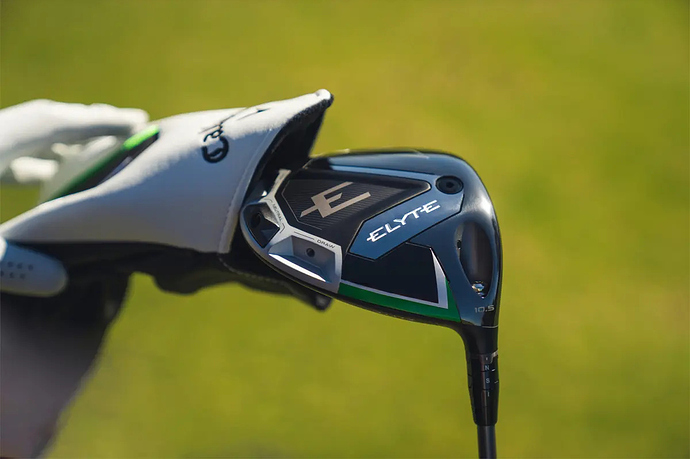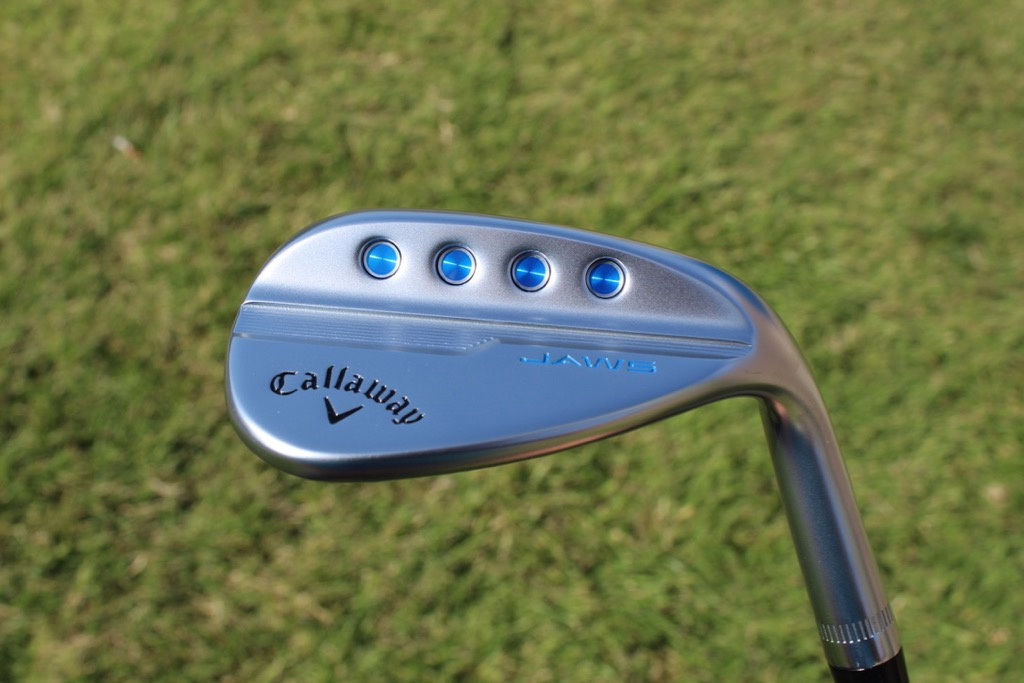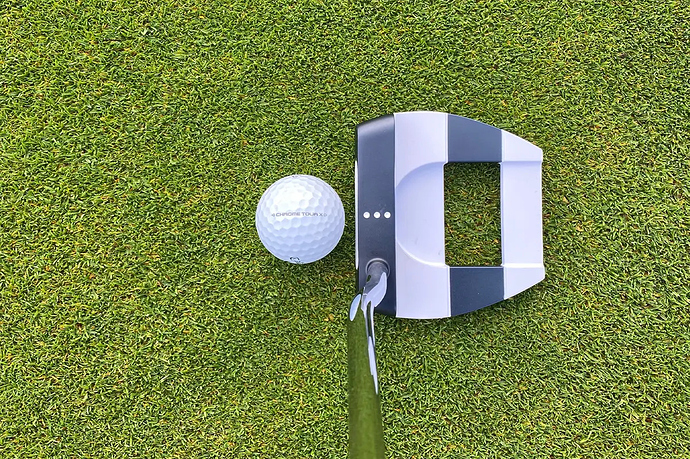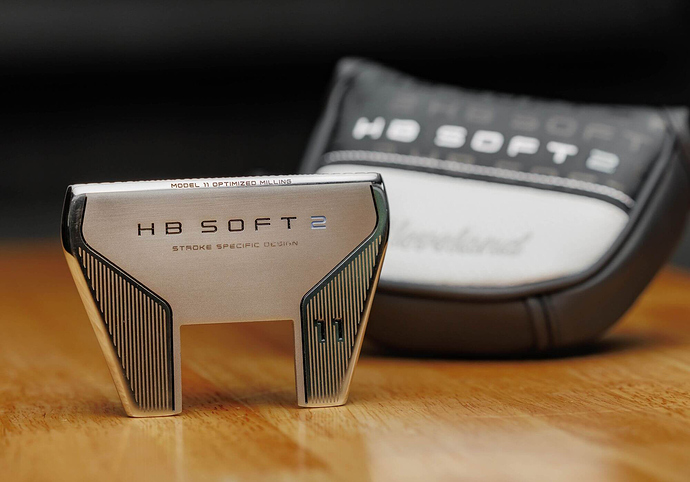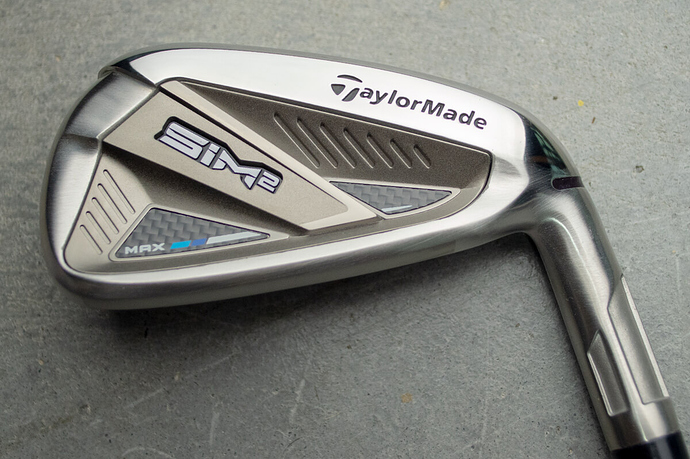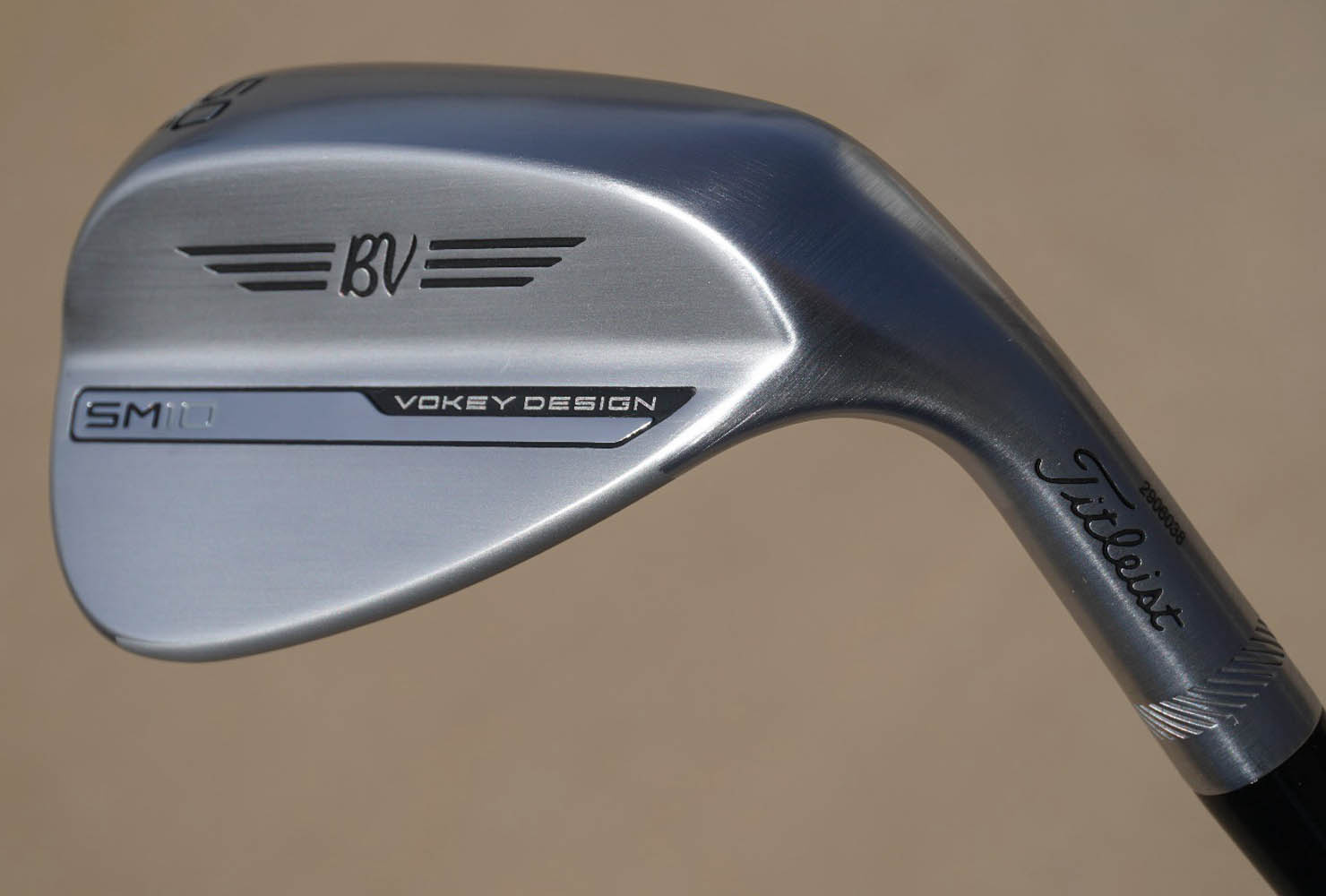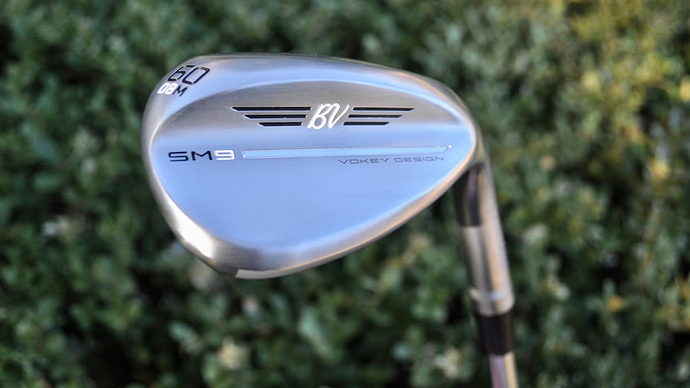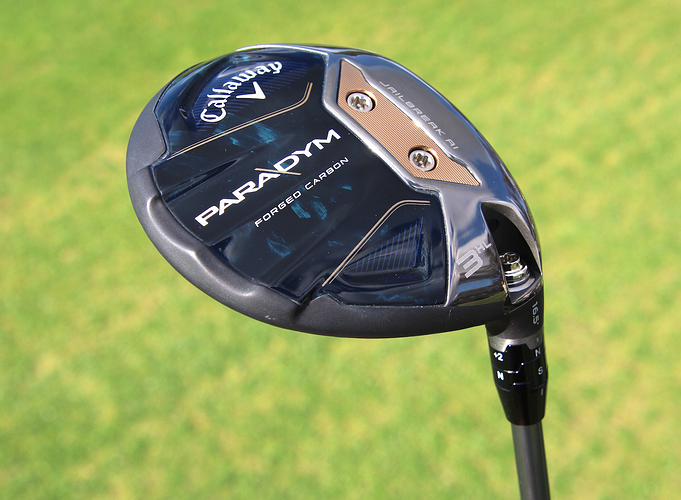Some clubs look good in the shop, but fall apart when it matters. Others? They make the game feel easier. More repeatable. Less frustrating.
That’s the type of gear we’re talking about here.
I tested these clubs across real rounds and range sessions. I paid attention to ball speed, launch, turf interaction, forgiveness, and how they feel when the swing isn’t perfect. If it didn’t check those boxes, it’s not on this list.
Here are the 11 best golf clubs in 2025 — and who they’re actually for.
1. TaylorMade Qi35 Driver — Best For Controlling Spin
This driver doesn’t just look clean. It gives you tight dispersion and a confident ball flight when you strike it well. The new weight track, which sits closer to the face than in the TSR3, lets you dial in ball flight without making the club feel back-heavy or unstable. If you’re the type of player who likes to shape shots or lock in a certain miss, you’ll actually use that adjustability.
When I tested it on a Trackman, I was sitting at 173 mph ball speed on average. Even the slight heel hits held up surprisingly well, with carry only dropping by about 6–8 yards.
What I liked most was the feel. It doesn’t sound hollow or muted. There’s a satisfying crack, especially on center hits, that lets you know you flushed it. For players who want speed and the ability to manipulate flight while still having some miss-hit protection, the Qi35 makes a strong case.
2. TaylorMade Qi Irons Gunmetal — Best For Mid-Handicappers
These are the irons that don’t look like they’re helping you — but they are. They’ve got just enough offset to keep things playable, but they still sit clean behind the ball. That gunmetal finish isn’t just for looks either. It reduces glare and gives them a more compact, confidence-inspiring look at address.
In terms of performance, the face is lively. Ball speed holds up across the hitting zone. On shots that felt a little thin, I was still getting solid carry and spin that held the green. The turf interaction is where these surprised me the most. Even with a slightly chunky swing, the sole worked through the turf without digging.
These irons are for the player who wants something that bridges the gap between a player’s iron and a full game-improvement model. You get help when you need it, but control and feedback when you hit it right.
3. Callaway Elyte Driver — Best For Effortless Speed
The Elyte is built for speed, but it doesn’t feel wild. It has a very balanced swing weight, and when you bring it through the ball, the face feels hot without being unstable. You don’t have to overswing to get performance out of it. Just a smooth tempo produces high launch and solid carry numbers, especially for moderate swing speed players.
The Ai Smart Face is what changes the game here. It’s designed using player data, so it knows where golfers tend to miss — and it protects you in those spots. My toe strikes didn’t snap left like they usually do with some drivers, and heel misses still produced decent flight.
I was consistently carrying it in the 270 range without swinging all out. If you want something that adds speed without making you work harder for it, the Elyte driver is worth a serious look.
4. Callaway MD5 Jaws Wedge — Best For Spin
This wedge flat-out performs when you need it most. It’s not the newest wedge on the market anymore, but it’s still one of the most trusted around the green. The Jaws grooves are as sharp as anything you’ll find, and you feel it immediately when you open the face and try to stop one quick.
Full shots flew with a more piercing trajectory than I expected, but with plenty of spin to hold a firm green. Chips and pitches check hard, even with a lower swing speed, and the contact is crisp.
The W-grind was solid out of bunkers and didn’t dig too much out of soft lies. If you’re a feel player who wants maximum spin and a predictable reaction on all types of shots, this one belongs in your rotation.
5. Callaway AI-One Cruiser Putter — Best For Consistent Roll
This putter doesn’t just look different — it feels engineered in a way that helps real golfers. The Ai-designed insert really does make a difference on mishits. I rolled a few off the toe and was shocked how close they ended up to my intended distance. The dispersion tightens up, especially on 25–40 footers where distance control is usually shaky.
The weight distribution in the head gives the stroke a super stable feel. You don’t have to manipulate anything during the swing — just start it on line and let the face do the work.
Feedback is there but softened, so you get that premium feel without harshness. It’s a great option for players who struggle to dial in speed from long range but want to keep the setup simple.
6. Cleveland HB Soft 2 Putter — Best For Pure Roll
Cleveland’s HB Soft 2 is one of those putters you try and then wonder why you were paying twice as much for something else.
It’s simple, classic, and well-balanced. The Speed Optimized Face Technology keeps the ball rolling true even on off-center hits, which is where most amateurs need the help.
I liked how square it sat behind the ball. The feel is soft but not muted — you still know when you catch it clean. The weight helps promote a smooth tempo, and short putts stay online. It doesn’t have all the high-tech adjustability of some more expensive models, but if you want a solid gamer that doesn’t cost a paycheck, this one overdelivers.
7. TaylorMade SiM 2 Max Iron — Best For Distance
These irons are built for launch and carry. They have strong lofts, but TaylorMade figured out how to pair that with a high launch profile, so you’re not just hitting low bullets. On the course, I was getting seven-iron numbers closer to what I’d expect from a six. The ball flight was high enough to land soft but still carried long.
What really impressed me was the forgiveness. You can catch it low on the face or slightly out on the toe and still see the ball climb and hold its line.
They’re louder than some players irons, but that’s the tradeoff for all that built-in tech. If your priority is hitting more greens from farther out without needing a perfect strike, these check all the boxes.
8. Titleist Vokey SM10 Chrome Wedge — Best For Skilled Players
If you’re someone who takes pride in their short game, the SM10 gives you everything you need to control spin, launch, and turf interaction. Titleist refined the center of gravity placement, which helps you flight it lower while still maximizing spin. I noticed it especially on full shots from 90 to 100 yards — the ball came out lower than I expected but with serious zip once it hit the green.
The feel is classic Vokey. Soft but crisp. You know immediately if you caught it clean. And there’s a grind for every kind of setup — I tested the S-grind and M-grind, and both had totally different personalities. You’re not buying this wedge for forgiveness.
You’re buying it to execute specific shots with precision. If you’ve got control in your hands, this wedge helps you get more out of it.
9. Titleist SM9 Chrome Wedge — Best For Spin and Control
While the SM10 brings some updates, the SM9 still holds up in a big way. It offers incredible consistency, especially on partial shots where some wedges tend to lose bite. The weighting in the head gives it a heavier feel through impact, which helps with tempo and makes it easier to control the low spinner or check-up chip.
What stood out was how stable the flight was. Even when I opened the face, the ball didn’t balloon or drift. The grooves were still sharp after several rounds, and spin numbers remained steady.
For players who already own the SM9, there’s no urgency to upgrade. But if you’re new to the Vokey lineup and want a dependable, tour-proven wedge, this one is still a killer pick.
10. Callaway Paradym Fairway Wood — Best For Balanced Power
This is one of those fairway woods that doesn’t demand a perfect swing. It just gives you results. Off the tee, the ball flight was flat and long. Off the turf, it still launched high and carried more than I expected. The Jailbreak Batwing tech stiffens the perimeter of the head so the face can flex — and you feel it pop at impact.
It has a neutral flight bias and doesn’t try to correct your shot too aggressively, which I liked. If you tend to hit fairway woods thin or low on the face, you’ll appreciate how this club helps get the ball airborne.
I used it off tight lies, into the wind, even out of light rough — and it never gave me a weird miss. Just consistent launch and solid contact.
11. Callaway Elyte X Fairway Wood — Best For High Launch
This club is all about making fairway woods easier to hit. It’s light, swings smooth, and doesn’t punish you when the swing isn’t perfect. What stood out right away was how high the ball launched from the deck. I don’t typically get height with a 3-wood off the turf, but this one made it feel automatic.
It has a subtle draw bias, which helps straighten out misses and adds carry for players who fight a fade. The feel is really clean through the ball — not too soft, but not clicky either.
If you struggle with low-flying fairway woods or just want something that helps you attack longer par-5s, this is the most approachable club I tested in that category.
Final Thoughts
Every club on this list was tested with one question in mind — does it help you play better without needing a tour-level swing? Some add distance. Some give you control.
A few do both. But what they all have in common is that they show up when the pressure’s on. If your gear isn’t helping you do that right now, it’s time for a switch.
